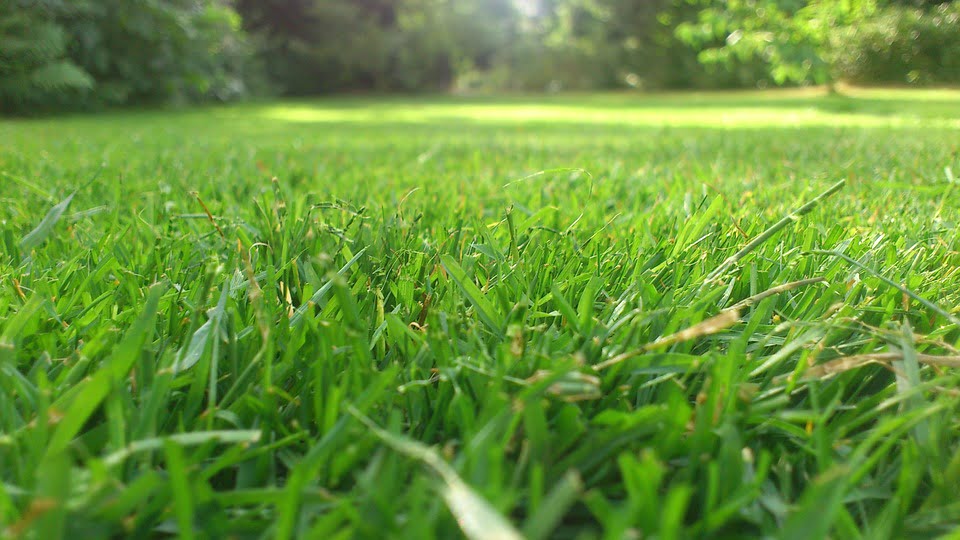Excess iron in plants can have detrimental effects on their growth and overall health. By being able to recognize the symptoms of excess iron, you can take the necessary steps to address the issue and ensure the well-being of your plants.
The symptoms of excess iron in plants can vary depending on the species, but some common signs to look out for include yellowing leaves, leaf discoloration (known as interveinal chlorosis), stunted growth, and leaf browning. It is important to familiarize yourself with the healthy appearance of each specific plant so that you can easily identify any signs of distress.
In addition to these visual symptoms, other indicators of excess iron in plants may include reduced nutrient uptake, impaired root development, and overall poor plant vigor.
Post Summary
- Excess iron in plants can negatively impact their growth and overall health.
- Recognizing symptoms such as yellowing leaves, leaf discoloration, stunted growth, and leaf browning can indicate excess iron.
- Familiarize yourself with the healthy appearance of each specific plant to identify signs of distress.
- Reduced nutrient uptake, impaired root development, and poor plant vigor are also indicators of excess iron.
- Addressing excess iron in plants is crucial for maintaining their health and preventing nutrient imbalances.
The Role of Nutrients in Plant Health
Plants rely on a balanced combination of macronutrients and micronutrients to maintain their health and vitality. Macronutrients, such as nitrogen, potassium, and phosphorus, are essential for plant growth and development and are needed in larger quantities. On the other hand, micronutrients, including iron, are required in smaller amounts but play a crucial role in various physiological processes.
When plants receive an excess of iron, it can disrupt the delicate nutrient balance, leading to iron toxicity and associated symptoms. Iron deficiency, on the other hand, can also impair plant health and growth. Therefore, it is important to understand the role of nutrients, including macronutrients and micronutrients like iron, in order to maintain optimal plant health.
“Plants rely on a balanced combination of macronutrients and micronutrients to maintain their health and vitality.”
To ensure that plants receive the necessary nutrients, it is important to provide them with a well-balanced fertilizer. These fertilizers contain a mix of macronutrients and micronutrients, including iron, in appropriate proportions. However, excess application of fertilizers or using fertilizers with higher iron content can lead to an excess of iron in the soil, which can have detrimental effects on plant health.
By understanding the role of nutrients, specifically plant nutrients like macronutrients and micronutrients, including iron, gardeners and plant enthusiasts can make informed decisions when it comes to fertilization and ensure that their plants receive the right amount of nutrients for optimal growth and development.
The Role of Macronutrients and Micronutrients
| Nutrient Type | Examples |
|---|---|
| Macronutrients | Nitrogen, phosphorus, potassium |
| Micronutrients | Iron, manganese, zinc, copper |
Factors Affecting Iron Availability in Soil
Iron availability in soil is influenced by several key factors that can impact its uptake by plants. Understanding these factors is crucial for maintaining optimal plant health and preventing nutrient deficiencies. The main factors affecting iron availability in soil include soil pH, soil moisture, and the presence of other nutrient deficiencies.
Soil pH
Soil pH plays a significant role in iron availability. Iron is most readily available to plants when the soil pH is within a specific range. In alkaline soils (pH above 7), iron tends to become less available, while in acidic soils (pH below 6), it can become more soluble and potentially toxic. Therefore, it’s important to ensure the soil pH is within the appropriate range for optimal iron uptake.
Soil Moisture
Proper soil moisture is essential for plants to obtain iron from the soil. When soil moisture is too high, it can lead to waterlogged conditions, reducing the availability of oxygen in the root zone. This can inhibit the uptake of iron and other nutrients. On the other hand, drought conditions can also impact iron availability, as plants may struggle to access water and nutrients from dry soil. Maintaining adequate soil moisture levels is necessary to promote optimal iron uptake.
Presence of Other Nutrient Deficiencies
The presence of other nutrient deficiencies can also affect iron availability in soil. Plants require a balanced combination of various nutrients to thrive, and deficiencies in certain nutrients can impact the uptake and utilization of iron. For example, a deficiency in nitrogen, phosphorus, or potassium can hinder the plant’s ability to absorb iron effectively. It’s important to address any nutrient deficiencies to ensure optimal iron availability in the soil.
| Factors Affecting Iron Availability in Soil | Impact on Iron Availability |
|---|---|
| Soil pH | Determines the solubility and availability of iron in the soil. Alkaline soils (pH above 7) may decrease iron availability, while acidic soils (pH below 6) can increase solubility but may lead to toxic levels. |
| Soil Moisture | Proper soil moisture is crucial for optimal iron uptake. Excessively wet or waterlogged conditions can hinder iron absorption, while drought conditions can limit water and nutrient uptake. |
| Presence of Other Nutrient Deficiencies | Deficiencies in other essential nutrients, such as nitrogen, phosphorus, and potassium, can impact the plant’s ability to absorb and utilize iron effectively. |
Recognizing Symptoms of Excess Iron in Plants
Excess iron in plants can cause a range of symptoms that indicate an imbalance in nutrient levels. By recognizing these symptoms, you can take timely action to address the issue and ensure the continued health and growth of your plants.
Yellowing Leaves
One of the telltale signs of excess iron in plants is the yellowing of leaves. This yellowing, also known as chlorosis, typically occurs in the younger leaves of the plant. The excessive iron inhibits the plant’s ability to properly absorb other essential nutrients, leading to this characteristic symptom.
Leaf Discoloration
In addition to yellowing, excess iron can cause leaf discoloration known as interveinal chlorosis. This condition is characterized by the appearance of green veins surrounded by yellowed areas between the veins. The discoloration occurs because the excess iron disrupts the normal chlorophyll production process in the leaves.
Stunted Growth
Plants with excess iron may exhibit stunted growth compared to healthy plants. The excessive iron interferes with the plant’s ability to take up other vital nutrients, which are necessary for proper growth and development. As a result, the plant may appear smaller and less vigorous compared to plants with balanced nutrient levels.
It’s important to note that the specific symptoms of excess iron can vary depending on the plant species. Familiarize yourself with the healthy appearance of each particular plant to better recognize signs of distress. By identifying and addressing excess iron in plants, you can ensure their overall well-being and optimize their growth potential.
| Symptoms | Description |
|---|---|
| Yellowing Leaves | Younger leaves turn yellow due to lack of nutrient absorption. |
| Leaf Discoloration | Interveinal chlorosis characterized by yellow areas between green veins. |
| Stunted Growth | Plants exhibit slower growth and smaller size compared to healthy plants. |
Correcting Excess Iron in Plants
When faced with excess iron in plants, it is important to take prompt action to restore a balanced nutrient environment. Correcting excess iron involves addressing the underlying cause and implementing strategies to adjust the soil conditions.
Soil Amendments
One effective method to correct excess iron is by using soil amendments. These amendments help improve the nutrient availability and balance in the soil. Organic matter, such as compost or well-rotted manure, can be added to the soil to enhance its structure and nutrient-holding capacity. This can help reduce the excess iron levels and restore a healthier nutrient balance.
Adjusting pH
Another crucial step in correcting excess iron is adjusting the soil pH. Iron availability is optimal within a specific pH range, so it’s important to test the soil and make necessary adjustments. If the soil pH is too low (acidic), liming materials can be used to raise the pH and promote a more favorable nutrient environment. Conversely, if the soil pH is too high (alkaline), elemental sulfur or other acidifying agents can be applied to lower the pH.
Iron Chelates
In some cases, iron chelates may be necessary to address excess iron directly. Iron chelates are compounds that bind to iron and make it more available to plants. They can be applied as foliar sprays or soil drenches, providing targeted treatment for iron toxicity. It is important to follow the recommended application rates and guidelines for the specific plant species to avoid any potential adverse effects.
By implementing these strategies and monitoring the progress, you can successfully correct excess iron in plants and promote their overall health and vitality.
Recommendations for Managing Nutrient Imbalances
| Nutrient Imbalance | Recommended Actions |
|---|---|
| Excess Nitrogen | Reduce nitrogen-rich fertilizers, increase phosphorus and potassium levels, improve drainage |
| Phosphorus Deficiency | Apply phosphorus-rich fertilizers, adjust soil pH if necessary, promote beneficial microbial activity |
| Potassium Deficiency | Use potassium-rich fertilizers, maintain proper soil moisture, prioritize balanced nutrient uptake |
| Micronutrient Imbalances | Implement targeted foliar sprays or soil amendments, optimize soil pH and organic matter content |
By effectively managing nutrient imbalances, you can create a favorable environment for plant growth and minimize the risk of nutrient deficiencies or toxicities. Implementing a comprehensive nutrient management plan tailored to your specific plants and soil conditions will contribute to their overall health and productivity.
Conclusion
Recognizing and addressing excess iron in plants is vital for maintaining the health and vitality of your green friends. Excess iron can lead to nutrient imbalances, affecting their overall well-being. By understanding the symptoms associated with excess iron and implementing appropriate corrective measures, you can ensure optimal growth and prevent further damage to your plants.
Regular monitoring of your plants’ health is crucial to identify any symptoms of excess iron. Keep an eye out for yellowing leaves, leaf discoloration (interveinal chlorosis), stunted growth, and leaf browning. By familiarizing yourself with the healthy appearance of each specific plant, you’ll be able to recognize signs of distress and take immediate action.
Addressing excess iron in plants involves maintaining a balanced nutrient environment. Consider adjusting the soil pH to optimize iron availability. Soil amendments can help improve nutrient uptake, while iron chelates can be used as a targeted treatment. Just remember to follow recommended application rates and guidelines for your specific plant species.
Proper nutrient management is key to promoting plant health. Regular soil testing allows you to identify nutrient imbalances and guide appropriate fertilizer application. Take into account factors such as soil type, plant requirements, and specific nutrient deficiencies to ensure your plants receive the essential nutrients they need for optimal growth and development.
FAQ
What are the symptoms of excess iron in plants?
The symptoms of excess iron in plants may include yellowing leaves, leaf discoloration (interveinal chlorosis), stunted growth, and leaf browning.
What causes excess iron in plants?
Excess iron in plants can be caused by factors such as soil pH, soil moisture, and the presence of other nutrient deficiencies.
How can I correct excess iron in plants?
Correcting excess iron in plants involves adjusting the soil pH, using soil amendments to improve nutrient availability, and considering iron chelates as a targeted treatment.
How can I maintain proper nutrient balance in plants?
Regular soil testing can help identify nutrient imbalances and guide appropriate fertilizer application. Factors such as soil type, plant requirements, and specific nutrient deficiencies should be considered when managing nutrient imbalances.
Why is it important to recognize and address excess iron in plants?
Recognizing and addressing excess iron in plants is crucial for maintaining their health and preventing nutrient imbalances. This ensures the optimal growth and vitality of your plants.
– Can Excess Iron in Plants Lead to Nutrient Deficiency?
Excess iron from chemical iron sources for plants can lead to nutrient deficiencies. Too much iron can interfere with the uptake of other essential nutrients like manganese, zinc, and copper. This imbalance can result in stunted growth, yellowing of leaves, and overall poor plant health.












